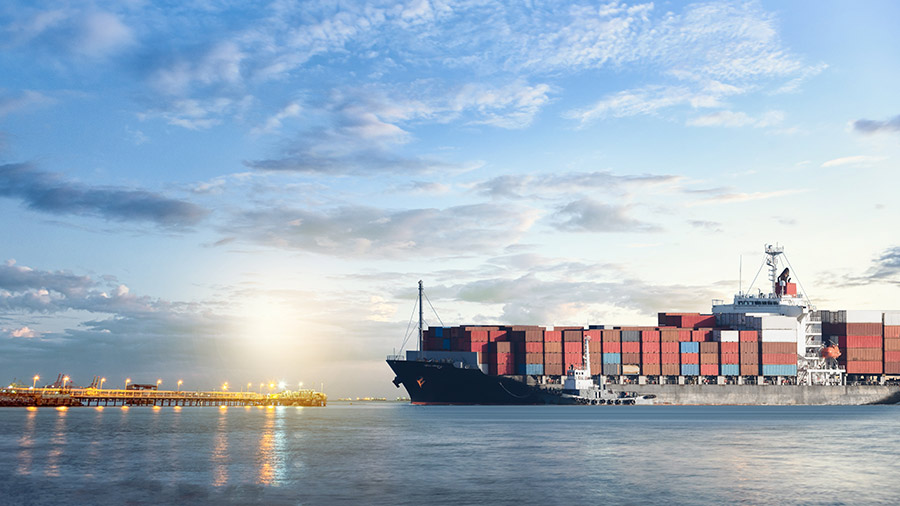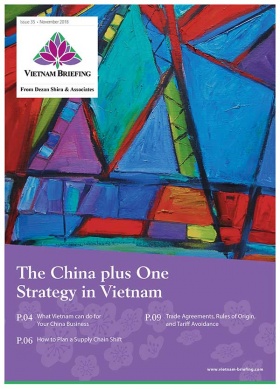Supply Chain Shifts from China to Vietnam
Supply chain shifts to Vietnam are gathering momentum, helped by China’s rising labor costs and other factors such as the ongoing US-China trade war.
Businesses with production facilities in China are looking at Vietnam when searching for an alternate manufacturing destination.
Navigating Asia’s geopolitical landscape is difficult for most foreign firms. This is more so when they have to consider moving business activity out of China.
China’s business ecosystem has been unparalleled in Asia due to its mature manufacturing ecosystem, infrastructure capabilities, and an increasingly predictable bureaucratic system.
The reason why Vietnam then features high on the radar for foreign businesses scaling up or choosing alternate sites outside China is its success in creating an adaptable production base – one that is also geared towards higher valued manufacturing.
Every country in Asia has a different set of strengths in so far as the manufacturing process goes, and many factors will be taken into account when rebuilding supply chains outside of China.
In this article, we discuss why Vietnam features prominently as firms worldwide reconsider their overreliance on a single production and sourcing base in China.
Vietnam’s appeal to multinational manufacturing firms
A study conducted by Natixis SA evaluated seven emerging Asian economies as manufacturing alternatives to China, and Vietnam was ranked number one. The study examined demographics, low wages, the World Bank’s Doing Business rankings, and logistics to determine manufacturing options.
The Vietnamese government has strategically transformed the nation into a ‘China plus one’ alternative by engaging in numerous free trade deals such as the Comprehensive and Progressive Agreement for Trans-Pacific Partnership (CPTPP) and EU Vietnam FTA (EVFTA), while developing its infrastructure to become a source for global export.
Vietnam has received some of China’s labor-intensive manufacturing, and this trend is most likely to continue given the government’s willingness to make progressive economic changes. Over the course of the last few decades, the implementation of market features, such as openness and trade, have become pillars for its economic restructuring. For example, Vietnam joined the World Trade Organization (WTO) in 2007 in a significant step towards merging with the global economy. Since then, several international trade arrangements to create favorable tax and investment terms have followed.
Supply chains shift to Vietnam: Textile and garment
The textile and garment sector are two of Vietnam’s major areas of export. For example, Vietnam is the second largest textile and garment supplier to South Korea after China. Industry observers also anticipate that Vietnam will soon take the top spot.
In recent years, multinational retail giants, such as Nike and Adidas, have broadened their manufacturing bases to Vietnam because of cheaper labor costs. Nike began to manufacture more of its product line in Vietnam than China starting in 2009, and Adidas soon followed in 2012.
Both shoe manufacturers shifted their production to Vietnam when wages in China rose to approximately US$400 per month. The current average wage a production worker earns in Vietnam is US$216 per month. However, with wages increasing at a current rate of 7.9 percent, manufacturers will most likely have to shift production again in the foreseeable future.
Maxfield Brown, Business Intelligence Manager at Dezan Shira & Associates said, “At this current rate, and with the implementation of the CPTPP to lift tariffs on textile and garment items, the textile industry in Vietnam has a production window of six years before it becomes commercially unviable.”
Supply chains shift to Vietnam: Electronic equipment
Vietnam’s high-tech boom in recent years has paved the way for the country to begin producing more higher-end goods. This is seen in the recent trend of electronics goods factories making the shift to Vietnam.
Most notably, China’s Goertek – the assembler for AirPods, Apple’s wireless headphones – has confirmed plans to shift production into Vietnam. Amid global tensions due to the uncertain outcome of the US-China trade war, in addition to the hefty tariffs placed on high technology, Vietnam has become a leading alternate manufacturing choice.
Major electronics firms – such as Cheng Uei, a Taiwanese firm that specializes in manufacturing equipment for iPhones and Petragon, an assembler of iPhone equipment – are also scaling their options outside of China, with Vietnam as one of the leading alternate countries.
Future supply chain shifts to Vietnam
As technology evolves, automation is most likely to replace low-cost factory production. This will create a greater demand for workers in the field of component manufacturing and assembly of electronics – like electronic components on printed circuit boards.
Vietnam’s proximity to China, its growing skilled workforce, competitive labor costs, and political stability make it an ideal manufacturing destination. Especially as component manufacturing is a complex process – one that needs to allow room for trial and error.
Why relocate to Vietnam?
The current US-China trade war truce offers temporary relief to manufacturers who were looking at a 25 percent hike on tariffs. Regardless of the outcome, business leaders will continue to assess the positives amid the trade war heat or seriously consider relocation. Companies that are over-reliant on China as a primary source of manufacturing will continuously battle unstable regulations on trade, rising labor costs, and stricter operational oversight.
Relocation is, however, a highly expensive process. It includes converting and transferring industrial plants into appropriate regions, transferring production lines, and sending qualified workers into a new country, such as Vietnam.
Multinational firms that want to shift production need to resolve new logistics in a new country, which can be expensive and take years to complete. For foreign firms that want to relocate to Vietnam, it would be advisable to partner with experienced contractors that have the right connections and local knowledge to facilitate an efficient integration.
The desirability of Vietnam as a China plus one destination is generating competition from international firms. Production costs to rent industrial land and source materials are increasing in competitive areas – this shows Vietnam’s resources are in-demand
Vietnam Briefing is produced by Dezan Shira & Associates. The firm assists foreign investors throughout Asia from offices across the world, including in Hanoi and Ho Chi Minh City. Readers may write vietnam@dezshira.com for more support on doing business in Vietnam.
- Previous Article 如何在越南找到合适的分销合作伙伴
- Next Article Vietnam : Expansion des investissements dans la province de Quang Ngai









